Note: This article was written before the Veneto region returned to orange zone status on March 8th.
As anyone who follows me on social media will know, coffee breaks form a vital part of my daily routine. Or at least they did, pre-Covid.
Don’t get me wrong, I still take breaks, and they generally involve coffee. But, in the post-Covid landscape, coffee breaks are not what they once were.
My days of poring over the Gazzetta dello Sport in a sun-kissed piazza, while enjoying an expertly prepared beverage and freshly baked pastry are, regrettably, a distant memory.
SEE ALSO: 19 unforgettable photos from a year of lockdowns in Italy
As most of my teaching responsibilities are now conducted online and my writing is done at home rather than in the library, my coffee breaks are generally solitary affairs, either alone in the kitchen or, now that spring has sprung, on our balcony.
Our trusty moka pot has never been so busy. Preparing the morning brew is now a regular part of my daily routine. I sleepily fill the water boiler, pile high the ground coffee in the snuggly fitting funnel-shaped filter, screw closed the upper chamber and ignite the stove. Then it’s just a matter of waiting.
I pull up the kitchen shutters and step out onto our balcony to survey the early morning scene, while behind me the magic begins to happen, filling the air with a rich intoxicating coffee-odour.
The gurgling intensifies, a process that scientists describe as the strombolian phase, in reference to the volcanic island, as that potent mixture of hot steam and water pass through the finely ground coffee, which we’re consuming at the rate of a packet a week, more than we would have normally consumed in a month.
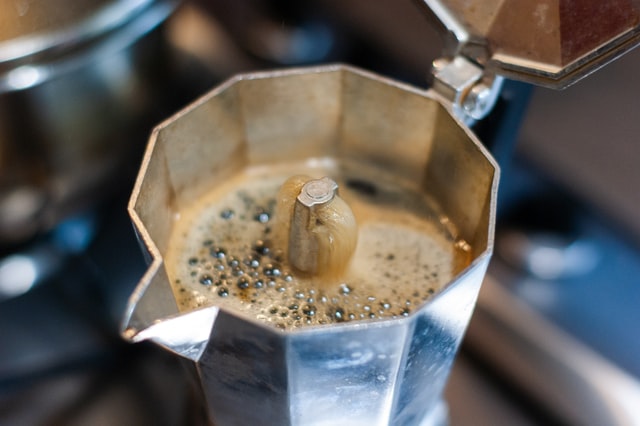
Photo by Thanos Amoutzias/Unsplash
Purists here will probably hate me for this, but in our household we tend to make a fresh brew in the morning and then use the leftovers for our mid-morning Americano.
Some things haven’t changed. I generally drink an espresso after lunch, but despite living in Italy for nearly ten years, the short, strong caffè liscio is not really my cup of tea, so I always top up my espresso with a dash of boiling water, for a longer Americano-style beverage that I can savour.
For a few years I dabbled with the macchiato and even the fabled cappuccino, but the addition of milk, often of the long-life variety, wasn’t really to my liking either. And don’t get me started on latte (or caffè latte as it should more properly be called), which the Italians rightly regard as an abomination!
READ ALSO: How to make the perfect Italian moka coffee at home
Pre-covid my teaching commitments meant that my days were generally spent cycling from one part of the city to another in between lessons. I would squeeze in coffee breaks and soon built up a network of cafes and bars across the city that I would frequent with some regularity.
In Italy you only need visit a bar a couple of times to be considered a regular. The barista will soon recognise you and know your preferences without having to ask. Staff turnover is generally low, with many making a career out of running a small neighbourhood bar, so you’ll generally be served by the same person every time you visit.
The hospitality sector has been decimated by the lockdown, losing an estimated 14 billion euros in the last twelve months. An estimated 30% of premises are thought to be at risk of closure.
Last week, in a conscious effort to get out more and to judge for myself how Italian coffee drinking habits have been affected by the Covid-crisis, I returned to a few of my favourite spots in Verona, in some cases for the first time in many months. I also spoke to a few friends to get their thoughts on the current situation. Here’s what I found.
Monday – Caffe’ Dell Ammiraglio
It was bright and sunny Monday morning, but still pretty chilly in the shade as I parked my bike in front of Caffe’ Dell Ammiraglio.
Tucked away in a small piazza between via Mazzini and Corso Porta Borsari, a friendly welcome and a superb club sandwich await you at this quintessential city centre bar. It’s one of the first bars I frequented when I moved to Verona ten years ago, and I’ve been a regular visitor ever since.
Giorgio Bissoli, the original owner of the bar, was a minor celebrity in the city, and was known to serve his customers in full admiral’s uniform. Today the bar is run by Nicò, without the admiral’s uniform, but just as engaging. Nicò knows all his customers by name. He knows the names of all of their kids, and of course he knows exactly how they like their coffee. He thrives on the rapid-fire hustle and bustle of a busy city centre bar, but this morning it’s quiet. It’s usually bustling with office and shop workers, but with so many office workers now working from home, bars like this one are struggling to stay afloat.
Barbara Salazer, a credit-risk analyst with Banco BPM was half-raised in a roastery, so coffee is an integral part of her DNA. Her experience is typical of the espresso-loving Italian office worker: “During lockdown I’d go to the office and all bars were closed. People were carrying around bottles with home-made brew to drink during the day, but I’m more an espresso kind of person. I like it short and black, love to watch the sugar float in the foam and then slowly disappear.
It was really tough, never in my life had I missed the noise in a bar so much. But then I found out that my favorite bar was open, takeout only… but real coffee. That hot brown liquid in a little carton cup definitely saved my life!”
Tuesday – Bar Caffetteria al Duomo
Opposite the Duomo, the lush courtyard through the back of Caffeteria al Duomo is the perfect place to enjoy a long continental breakfast. Again, this is one of my long-standing favourites. In the first few months that we lived in Verona, I cycled up the Colombare hill to drop my son off at nursery school. Zooming back down the hill, I swung across the Ponte Pietra bridge and was drawn to the imposing bulk of the Duomo.
Across the road I stumbled into the Caffetteria al Duomo, where I found some shade and gulped down a refreshing spremuta d’arancia. It’s a bar that I’ve returned to regularly in the intervening years. Submerged in nature, it’s the perfect oasis to relax and be inspired. Apart from the table full of students who seem to be cramming for a test, the courtyard seems far quieter than I remember. I wasn’t even able to read the Gazzetta, since newspapers are no longer available. I order a second coffee, pull out my laptop and manage an hour of writing in this perfect haven of tranquility.
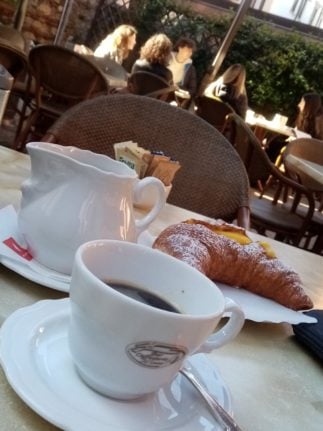
Photo: Richard Hough
Sara is the communications director for an award-winning winery. She recognises that Covid has interrupted many of her old habits, as it has for everyone. But it has also forced her to adopt new ones – not better or worse, just different. “I drink a lot less,” she says, before clarifying; “No more than three times a day, but often decaf”.
When she stops for a coffee now, she savours the moment: “I put everything else on standby for a few minutes. It’s a useful exercise to release tension and refocus on everyday life.” Most of all she misses meeting friends at the bar for a coffee. At least once a week she enjoyed a long breakfast and a chat about travel, books and life.
“The old habits will return,” she insists, “we’ll just let go of all the superfluous stuff.”
Wednesday – Caffè Coloniale
Caffè Coloniale is another revered Veronese coffee house. Tucked in a courtyard behind Juliet’s Balcony, it has a slightly old-worldly air to it. Again, it’s quiet, even during that peak coffee drinking period between ten and eleven. The dozen or so tables outside would normally be full, but this morning only two are occupied (including my own). When my neighbours get up to leave, I find myself alone in the courtyard, while at the nearby junction a few vans are double-parked, making their deliveries to the nearby shops.
The coffee is decent, the brioche alla marmellata ridiculously sweet. Despite the blue sky and sunshine in the shade there is still a chill in the air, so I order a second Americano before my 11 o’clock appointment with the taxman.
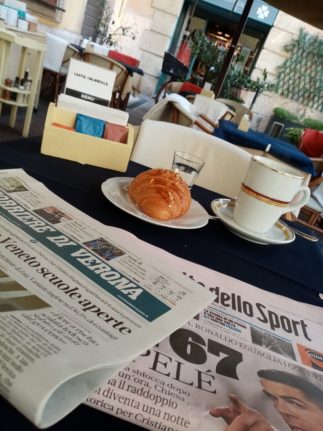
Photo: Richard Hough
Nicco is another who has felt the difference of lockdown. He’s a language teacher from Trieste, a city with a significant coffee tradition, and home to global brands including Illy and Hausbrandt.
Despite the restrictions, he’s enjoyed his regular coffee hit, but his habits have changed. When circumstances have permitted, he would meet a friend outside a bar for a coffee, but he misses those spontaneous encounters, chance meetings with friends, acquaintances or even complete strangers.
Nicco remains optimistic, “soon we’ll return to having a coffee as before, spontaneity will return, but some faces around us will have changed”.
Thursday – Dal Zovo wine bar
Having enjoyed a few of the more established Veronese coffee haunts, this morning I’ve decided that it’s time for something fresher.
Just across the Ponte della Vittoria, via IV Novembre a cluster of innovative new coffee houses have emerged in recent years. Leading the way is Elk Bakery, a popular American-style diner that serves tasty cookies, pancakes and smoothies. Across the road is Conviviale cafè, another relative newcomer. Both of them are pretty busy this morning, so I opt instead for Dal Zovo wine bar. It’s another iconic Veronese bar. Perfect for an aperitivo, but also very good for a morning coffee. The Dal Zovo family, now in its third generation, have run the enoteca here since 1962, but somehow it has a fresh, contemporary vibe as well as super-friendly service and a great selection of drinks and snacks.
Despite the difficulties, some bars have prospered during the lockdown. This is a view shared by Anna, an Italian teacher with My Italian Circle who lives and works in the centre of Verona. In her local bar, demand has even increased, both for breakfasts and during the day. Takeaways are up and there has been an increase in custom from mothers with kids and the elderly, who are seeking an escape from homeschooling and isolation. Without having to rush to the office or school in the morning, there seems to be more time to enjoy breakfast at the bar.
“Demand for coffee”, Anne insists, “will never fall!”
Friday – La Costa in Bra, Piazza Bra.
Of course, I wouldn’t normally come to Piazza Bra for a coffee. In fact, I’ve spent much of the last ten years avoiding the place, in a futile attempt to avoid being mistaken for a tourist! But, in the interests of journalistic integrity, I decided I had to come to the beating heart of Verona’s café culture. And I’m glad I did.
Piazza Bra is the place where thousands usually flock every day to enjoy a coffee or pre-opera aperitivo in one of Italy’s most recognizable public spaces. Much as it pains me to say it, my coffee here was a truly enriching experience.
The bar was quiet. I stayed all morning without feeling pressure to move on. I could, in truth, have stayed all day. Bathed in beautiful warm sunshine, it’s quite simply the best place to sit and watch the world go by.
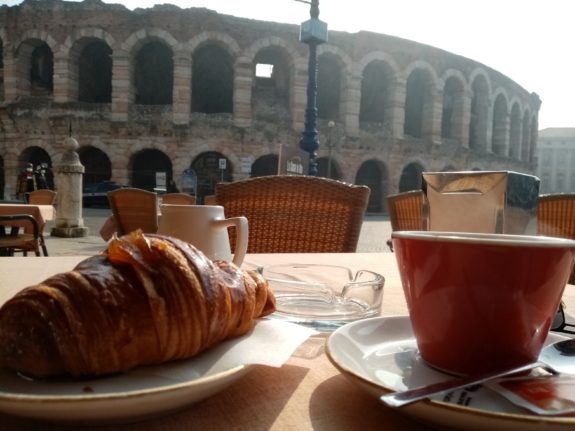
Photo: Richard Hough
The coffee was amongst the best I’ve had all week and the brioche alla marmellata was fresh and substantial. I even managed to do a decent amount of editing on a completed chapter of my next book about wartime Verona. And all of this just a stone’s throw from the awe-inspiring form of the Roman Arena.
With a dearth of tourists at the moment, these bars should really be re-inventing themselves as outdoor office space, at least in the short-term until the tourists return. I for one would certainly set up shop here.
Now that Veneto, like much of the rest of Italy, has returned to the orange zone, what does that mean for my coffee breaks here in Verona? Well, once again all the bars and restaurants in the city are now closed, although some will continue to offer a takeaway service. But, as my experience last week demonstrated, coffee bars provide so much more than just coffee. Company, gossip and chance encounters, sometimes even a beautiful place in the sun to sit and watch the world go by.
All that will have to wait, as I return to the kitchen to fill up my moka.
Richard Hough has lived in Verona since September 2011 and writes about the region’s history, football, wine and culture. His first book, Notes from Verona, a short collection of diary entries from inside locked down Italy, is available here. He is currently researching his next book about wartime Verona.



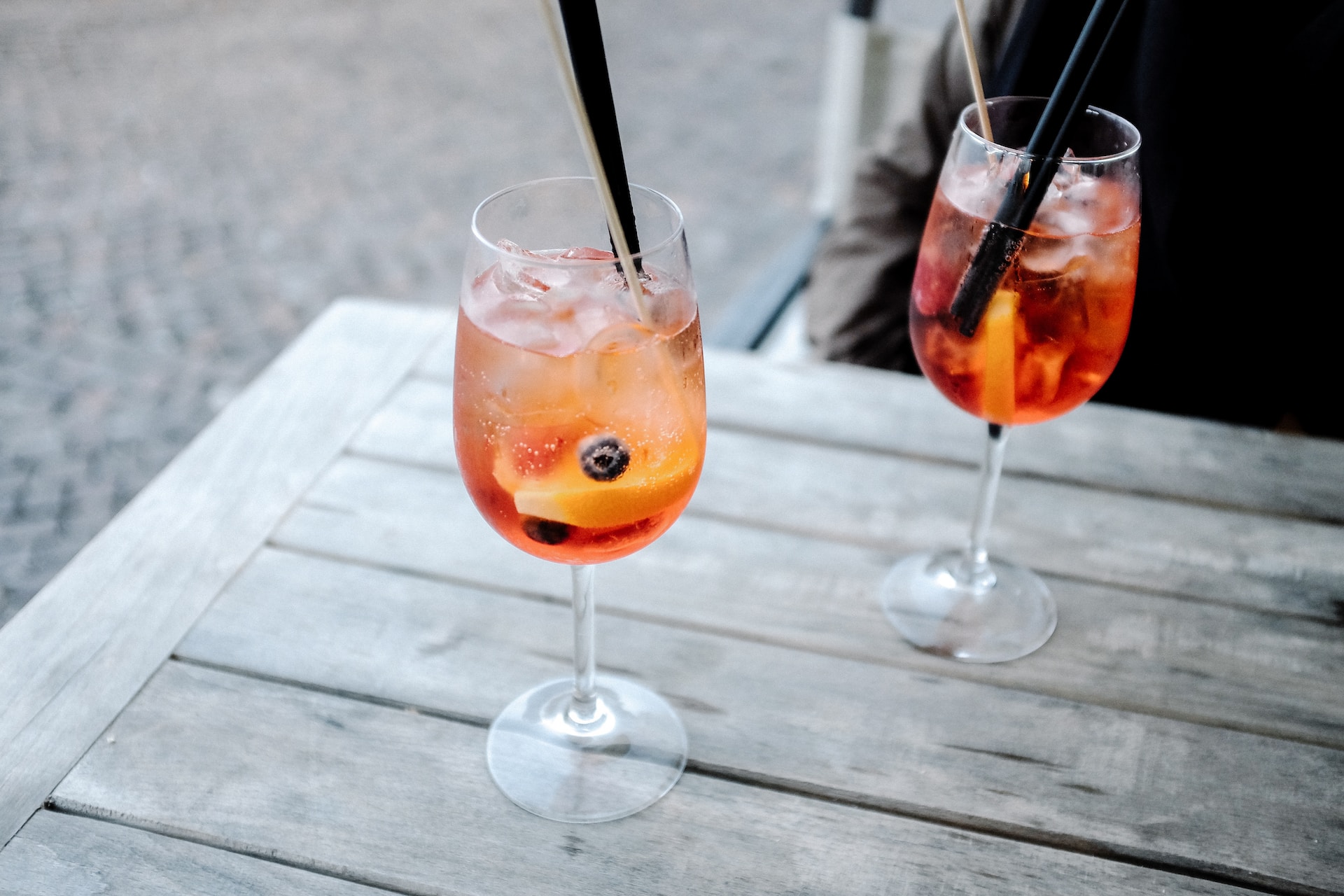
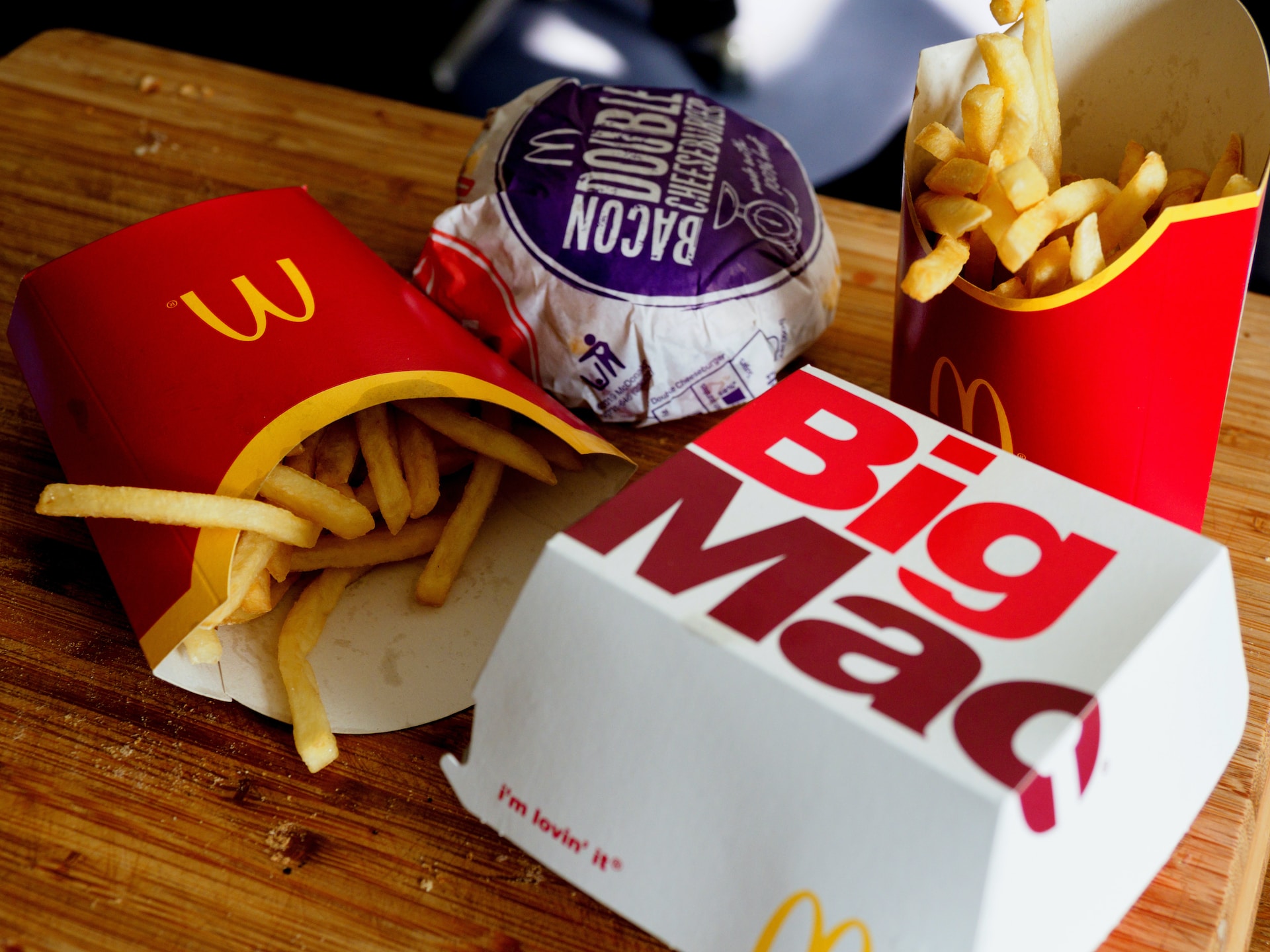
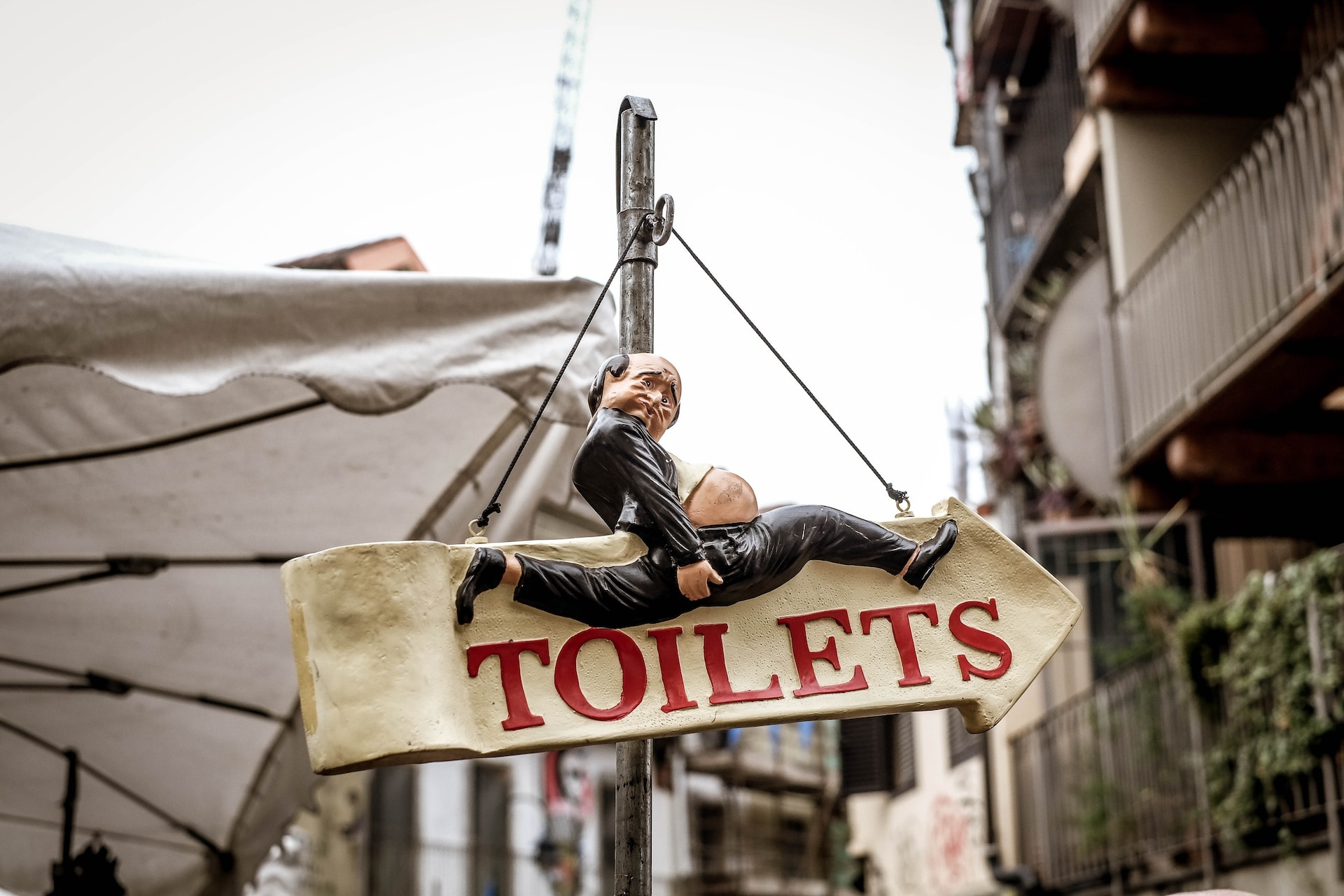
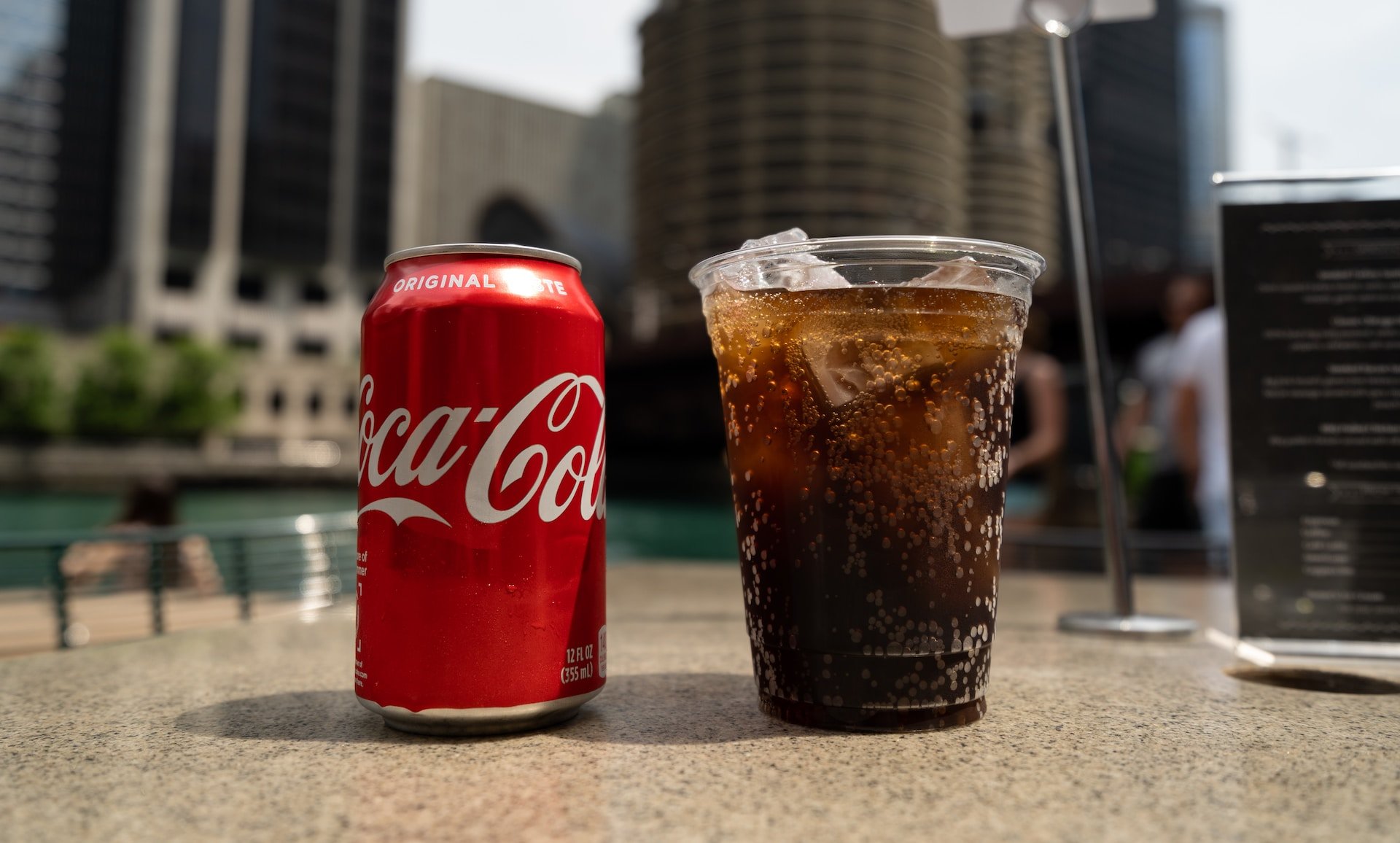
 Please whitelist us to continue reading.
Please whitelist us to continue reading.
Member comments